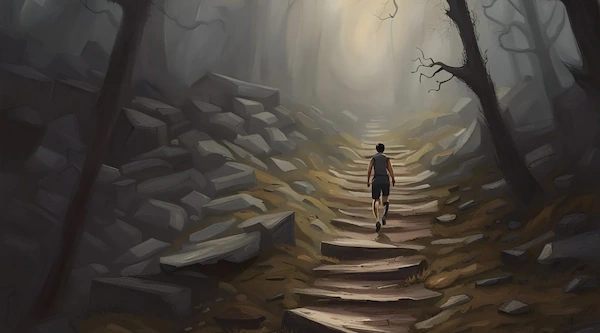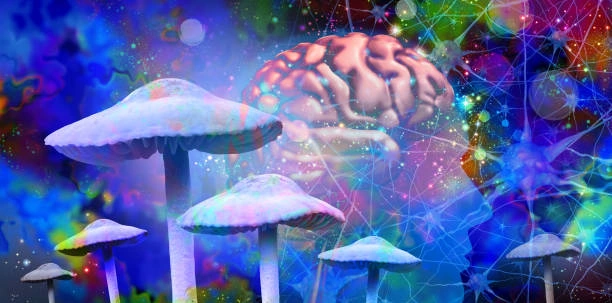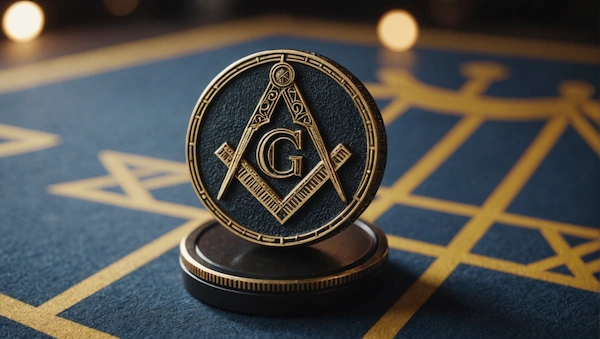
The pursuit of spirituality is often romanticized as a serene voyage filled with peace, love, and harmony. Many spiritual seekers describe their journey as transformative, leading to profound inner joy and fulfillment. Yet beneath these radiant testimonials lies a more nuanced truth—the authentic spiritual path is not merely a gentle stroll through sunlit meadows but rather a demanding ascent that challenges every aspect of our being. This exploration reveals why genuine spiritual development requires far more than pleasant rituals and comforting philosophies.
The Seductive Illusion of Effortless Enlightenment
Contemporary culture has packaged spirituality into an appealing consumer product—a collection of practices promising transcendence without transformation, enlightenment without effort. Social media overflows with carefully curated images of serene practitioners in picturesque settings, suggesting that inner peace is merely a technique away. This commodification of the sacred creates a dangerous illusion that spiritual development follows a linear, comfortable progression marked primarily by positive experiences.
The ancient wisdom traditions tell a different story. From the Buddha’s harrowing confrontation with Mara beneath the Bodhi tree to Christ’s temptation in the wilderness, profound spiritual awakening has historically been preceded by periods of intense struggle. These archetypal narratives suggest that genuine spiritual evolution requires confronting the shadow aspects of consciousness rather than bypassing them.
The Necessary Crucible of Inner Conflict
One of the first paradoxes encountered on the spiritual path is that increased awareness initially brings greater discomfort. As consciousness expands through contemplative practice, we begin to witness the previously unconscious patterns that govern our behavior—our reflexive judgments, deep-seated fears, and automatic reactions. This heightened self-awareness illuminates the gap between our spiritual aspirations and our actual lived experience.
The process resembles archaeological excavation—each layer of meditation and self-inquiry unearths deeper strata of psychological material. Long-repressed traumas, unacknowledged grief, and unintegrated aspects of the self rise to consciousness, demanding attention and integration. While this process ultimately leads to greater wholeness, it often manifests initially as emotional turbulence, existential questioning, and profound disorientation.
This is why many spiritual traditions emphasize the importance of skilled guidance during these periods. The Tibetan Buddhist concept of the “spiritual friend” (kalyanamitra) and the Christian tradition of spiritual direction acknowledge that navigating these inner storms requires both wisdom and compassionate support.
The Paradox of Surrender
Perhaps the most challenging aspect of spiritual development is the fundamental reorganization of identity it ultimately requires. Most spiritual traditions point toward what philosopher Ken Wilber calls the “death of the separate-self sense”—the recognition that our conventional understanding of ourselves as isolated entities is fundamentally incomplete.
This realization demands a profound surrender—not merely of external attachments but of our most basic assumptions about who and what we are. The ego, sensing this existential threat, often responds with resistance that manifests as fear, doubt, or intensified attachment to familiar patterns. The ancient metaphor of the grain of wheat that must die before it can bear fruit aptly captures this paradoxical necessity of surrender preceding transformation.
This surrender extends beyond conceptual understanding. It requires allowing cherished identities, relationships, and life structures to undergo radical reorganization. Someone might discover that their professional identity no longer aligns with their deepest values, or that long-standing relationships need to evolve or dissolve. These transitions rarely follow convenient timelines and often involve periods of profound uncertainty and loss before new, more authentic expressions emerge.
The Counter-Cultural Nature of Spiritual Practice
The spiritual journey inevitably places one in tension with prevailing cultural values. In a society that prizes productivity, accumulation, and constant stimulation, practices centered on presence, simplicity, and inner attunement appear increasingly radical. The contemplative who prioritizes silence in a world of noise, who cultivates contentment amidst consumerism, who embraces uncertainty in an age obsessed with control—such a person inevitably moves against the dominant currents of contemporary life.
This counter-cultural positioning often triggers social friction. Family members may express concern about changing priorities. Professional colleagues might question evolving approaches to work and success. Even casual acquaintances may respond with discomfort to shifts in communication patterns or values. The spiritual practitioner thus faces not only internal resistance but external incomprehension—a twofold challenge that can intensify feelings of isolation.
This social dimension explains why many spiritual traditions emphasize the importance of sangha or community. Fellow practitioners provide both validation and perspective during periods when one’s inner experience diverges sharply from conventional reality. A community of practice creates a container where emerging insights can be shared, questioned, and integrated without premature dismissal.
The Twilight Zone: Navigating Spiritual Liminality
Anthropologists use the term “liminality” to describe threshold experiences—periods of transition when one has left a former identity behind but has not yet fully established a new one. These liminal phases feature prominently on the spiritual path, creating extended periods where practitioners feel caught between worlds, belonging fully to neither.
These transitional states can be profoundly disorienting. The frameworks that previously gave life meaning may no longer resonate, yet new understandings remain incomplete or unstable. Familiar spiritual practices might suddenly feel empty, while conventional pursuits no longer satisfy. This “dark night” experience, described in various traditions, represents not failure but an invitation to a more authentic relationship with reality—one that transcends formulaic approaches and secondhand knowledge.
During these liminal periods, the practitioner must develop what Zen tradition calls “not-knowing mind”—the capacity to remain present with uncertainty without prematurely resolving it through conceptual frameworks. This stance requires exceptional courage and patience, qualities that develop precisely through weathering such transitional storms.
Integration: The Ongoing Challenge
Perhaps the most persistent challenge of spiritual life is integration—embodying profound insights within ordinary human experience. Many practitioners encounter a troubling disconnect between moments of transcendent awareness and their daily functioning. The clarity experienced during meditation may seem to evaporate when confronting workplace conflicts or family tensions. This apparent gap between realization and embodiment creates an ongoing developmental imperative.
Integration requires reconciling apparent opposites: being fully engaged with the world while maintaining inner spaciousness; honoring both ultimate truth and conventional reality; expressing compassion without falling into codependence or enabling. These balancing acts demand continuous discernment rather than formulaic solutions.
The integration phase also reveals the cyclical rather than linear nature of spiritual development. Rather than ascending steadily toward enlightenment, most practitioners move through recurring cycles of expansion and contraction, insight and embodiment, transcendence and integration. This spiral path challenges linear notions of progress but ultimately creates more sustainable transformation.
Community: The Vessel of Transformation
While spiritual practice has deeply personal dimensions, genuine development rarely occurs in isolation. The intersubjective field created by authentic spiritual community provides essential mirroring, challenge, and support. Fellow practitioners help us recognize both our blind spots and our gifts, offering perspectives that balance our inherent biases.
The most effective spiritual communities embody what philosopher Martin Buber called the “I-Thou” relationship—encounters characterized by genuine presence rather than utilitarian connection. These communities create sacred containers where vulnerability becomes possible, where difficult truths can be spoken, where both human limitations and divine potentials are acknowledged.
In our increasingly fragmented society, creating and sustaining such communities requires intentional effort. The spiritual practitioner must actively seek or create contexts where authentic exchange becomes possible, often swimming against currents of superficiality and acceleration that characterize much contemporary interaction.
The Alchemy of Suffering: Transforming Lead into Gold
Despite—or perhaps because of—its challenges, the spiritual path offers profound transformation unavailable through more comfortable routes. Just as physical muscles develop through resistance training, spiritual capacities expand through engaging with difficulty rather than avoiding it.
Through confronting our shadows, we develop genuine compassion rather than sentimental positivity. By facing uncertainty, we cultivate wisdom beyond mere knowledge. In acknowledging our limitations, we discover an authenticity more valuable than perfection. The very qualities that make spiritual life challenging—its demand for wholeness, honesty, and surrender—are precisely what enable its profound transformative potential.
This alchemical dimension reveals perhaps the central paradox of spiritual life: our suffering, when met with awareness and compassion, becomes the very material for our awakening. What initially appears as obstacle reveals itself as gateway. The wound becomes the opening through which the light enters.
Conclusion: The Journey That Encompasses All of Life
Authentic spirituality is not a separate domain of life focused on transcendent experiences, but rather a fundamental reorientation that transforms every dimension of human experience. It demands nothing less than our whole being—our darkness and light, our confusion and clarity, our resistance and surrender.
This comprehensive nature explains why the spiritual path cannot be a casual undertaking or comfortable diversion. It represents humanity’s most ambitious project: the conscious evolution of consciousness itself. Such a journey inevitably encounters resistance, both internal and external, precisely because it challenges the fundamental structures through which we have organized our experience.
Yet those who persist discover that the difficulties themselves contain hidden gifts. The challenges that initially appear as obstacles to spiritual realization ultimately reveal themselves as essential catalysts for authentic transformation. In this recognition, the spiritual traveler finds not an escape from life’s complexity but a capacity to embrace it more fully—with greater wisdom, compassion, and authenticity than they previously imagined possible.
DO YOU LIVE IN THE PLATONIC CAVE?
Have you heard of the myth of the cave by the ancient Greek philosopher Plato? If you’re curious about how the world works and want to understand it better, this is a must-read! This myth was invented 2,500 years ago, but it’s more relevant than ever. It is about the human condition, the search for divine knowledge and enlightenment, but also about the illusory nature of the earthly world.
Read the sentences below and select the ones you agree with and that you think make the most sense.
Determine the number of selected boxes and examine the resulting profile.
0: You escaped from the cave
1-2: You are almost out of the cave
3-4: You live in the cave but at times you find it uncomfortable
5-6: You live in the cave and you like it very much
Further details on living in the cave





